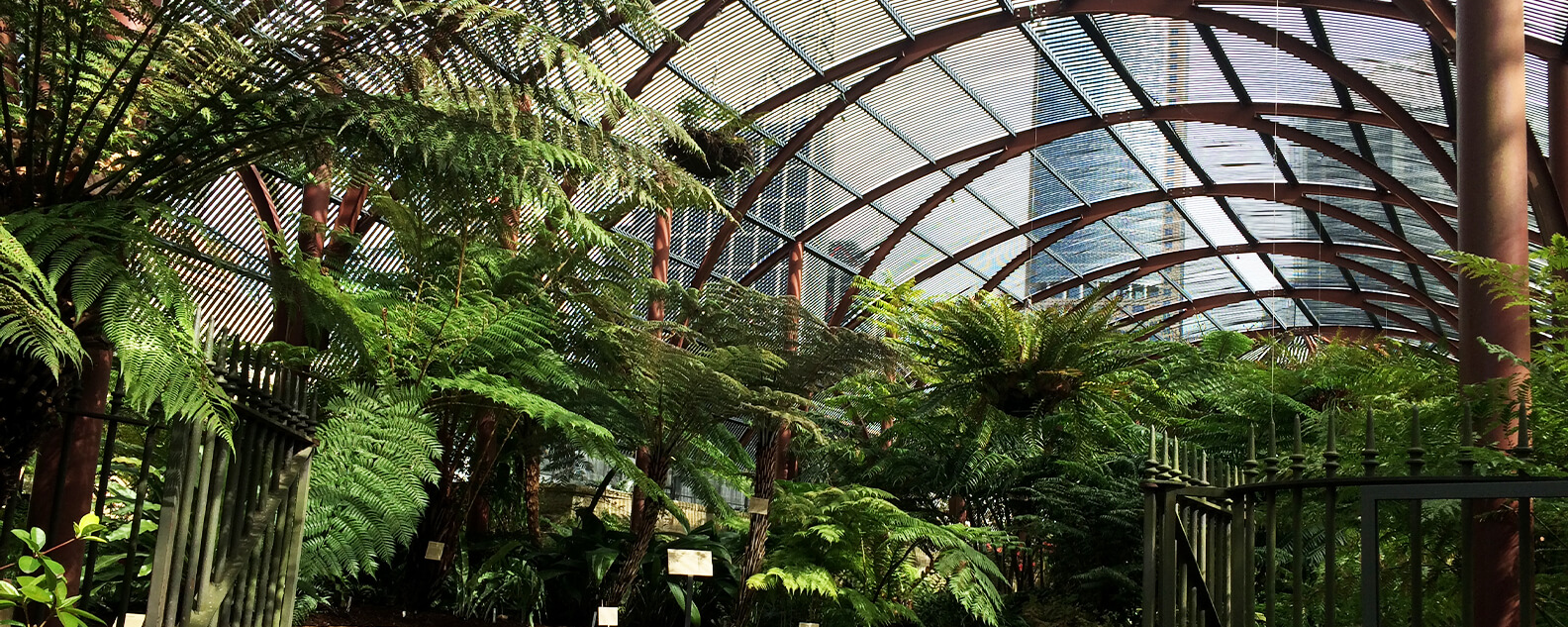The Fernery
Discover an ancient group of plants in an intimate garden setting.

Ferns and their close allies, the mosses were amongst the earliest vascular plants to colonise the earth more than 350 million years ago.
The word fern comes from the old Anglo-Saxon word ‘fearn’ meaning feather, which refers to the delicate compound leaves known as fronds that are found on some ferns. If you take a closer look at the underside of many fern’s fronds you might find brown sunken or raised spots. Don’t worry! These are not signs of some terrible pest or disease, but a unique characteristic of ferns called sori, their patterns are one of the key ways to identify fern species.
Inside the sori, arranged in a structure called sporangia are dust-like single-celled spores. The spores, which are spread by the wind, hold the secret of how ferns – a plant with no flowers or seeds – reproduce. If spores settle in a spot with standing water, the cells begin to divide and the spore grows into a prothallus. This tiny, plant-like structure then develops separate male and female parts. These then reproduce to create a sporophyte, the plant we know as a fern.
The Victorians were mad about ferns!
When the reproductive mystery of the fern was solved in the Victorian era, it led to widespread Pteridomania or Fern-Mania. Wealthy Victorians were so dazzled by these amazing plants that it became fashionable to build Wardian cases and conservatories to create the perfect climate in which to collect and grow them.
Take a walk among giants.
Although most of the 12,000 fern species known to us today developed in the last 200 million years, we have a relic of a far more ancient era in the fernery. The Giant or King fern, Angiopteris evecta is native to tropical Australia, New Caledonia and Asia. Its fronds, which can grow to up to six metres long, begin life as tightly curled croziers (also known as fiddle heads).
The Garden’s fernery was designed by architect, John Barbacetto and was originally a student project. The structure was built in 1993 and its slatted steel roof and sandstone walls create an intimate enclosure that houses more than 350 species of ferns and other tropical perennials, including orchids and begonias.
The walls of the fernery are made from recycled sandstone that was originally carved in 1826 for the Governor’s harbour-side bathing house at Farm Cove. The sandstone bricks contain some of Australia's best-preserved examples of “banker’s marks”. Banker’s marks are distinct symbols carved into a brick to identify the convict stonemason responsible for its hewing. The banker's marks were used to calculate the convict's pay.
Escape from the heat of the day and spend some time in the fernery when you visit – it’s a magical place to relax.

The word fern comes from the old Anglo-Saxon word ‘fearn’ meaning feather.